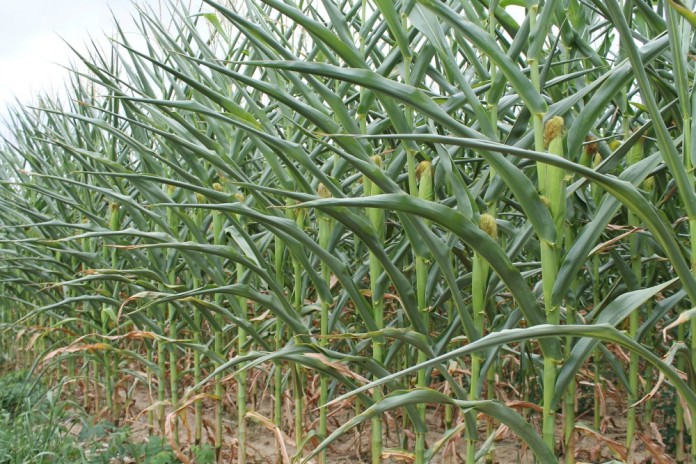One of the oldest axioms in the grain business has to do with the perception of drought in the market.
You will hear that the prices went down because it rained on LaSalle Street. LaSalle Street is the location of the Chicago Board of Trade. The idea is, it is hard for the traders to believe in drought if it is raining in the street outside their windows.
Add to that the idea that the state of Iowa disproportionally represents the Midwest as a whole when it comes to corn production, and you can explain market reaction last week.
Losses
It rained on LaSalle Street. It also rained as much as 5 inches in parts of Iowa. Ta-da — sharply lower prices on the Chicago Board of Trade. Corn ended the week down 19 cents. November soybean future lost over 43 cents.
Meanwhile, I listened yesterday to a man talk about an extended crop tour in North Dakota that revealed widespread areas of soybeans that are actually dying from drought.
The driest areas of the Northern Corn Belt include the Dakotas and Minnesota. These three states raise almost a quarter of our nations’ soybeans. This area is in trouble, and it is not just a matter of slightly reduced yields.
Actually, the big part of the losses came on June 25 as a knee-jerk reaction to a Supreme Court decision. The decision was in support of several small refineries that had been refused an extension of a RIN exemption.
The details would take us into the weeds, but the result was a horrendous June 25 and some follow-through June 28.
So, we are coming to the end of June as this is written, and the fundamentals of this year’s crops are still in dispute.
Waiting on a high
Another prominent axiom of the grain trade is that a weather market-driven year’s high comes in late June, and is often confirmed before the Fourth of July. We are there; we have weather problems, and prices have gone down instead!
This leaves us with two possibilities. Either we had the high a few weeks ago on the fears that are becoming more of a reality, or we have one more leg of the weather market coming.
It would be late, but recent memories of the run-up in August last year might make farmers patient in their selling.
Last year the world changed in August, with a wind storm in Iowa that made the then largest corn-producing state corn deficit, and surprising exports that depleted our carryout.
I must admit that the down in the mouth reports of a week ago from Midwest farmers shy of rain were vastly changed by a week of general rains. So, now, we have the Iowa farmers looking at good crops again and hoping for good prices to remain to help recover from the disaster last year.
Bearish outlook
At the same time, we have northern Corn Belt farmers who don’t think they can ever have a good crop even if it finally starts to rain.
Adding to the possible bearish outlook for corn as this is written is the U.S. Department of Agriculture planted acres report. The first report, March 31, predicted 91.44 million acres of corn and 87.6 acres of soybeans. That was expected to make soybeans even tighter in supply.
Recent estimates of corn acres have been predicted from nitrogen fertilizer use. Many in the trade anticipate this report to increase corn acres to almost 94 million acres.
This may be negative to corn prices, or it may be much of the reason for recent price declines and already “in the market.”
The result of these conflicts over the fundamentals in the market is that price volatility will continue.
It is hard to bet that we have new highs late in the summer when it almost never happens. It is hard to bet that we won’t when long-term weather forecasts still predict hot and dry conditions for the last summer.
I am glad I am watching the market, not being forced to trade it, which is what every farmer is forced to do.














Marlin, your closing comment, “ I am glad I am watching the market, not being forced to trade it, which is what every farmer is forced to do” is a real ray of sunshine! Haha! I am glad we have you monitoring this volatile market and reporting to us. I personally think many of these traders need a proctologist to find their head and get out into the real world. Keep up the good work!